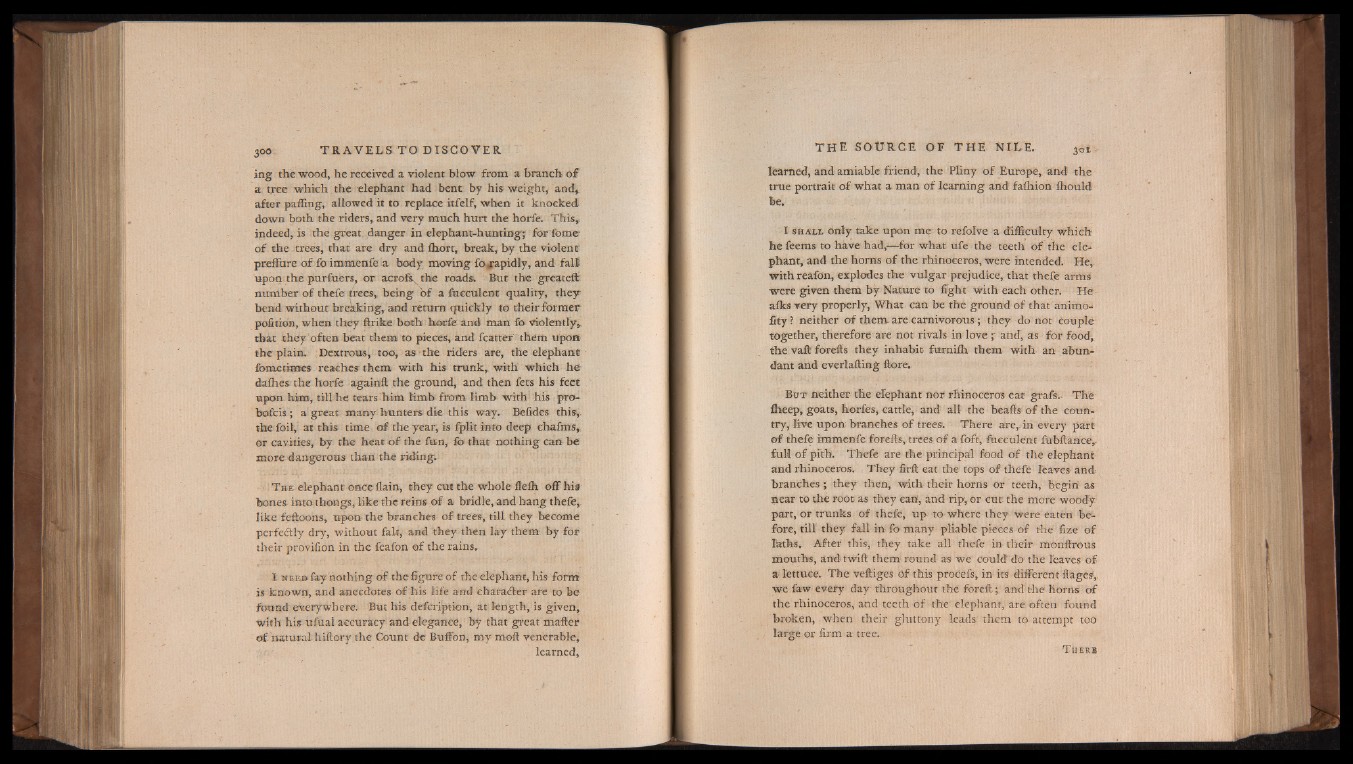
in g the wood, he received a violent blow from a branch o f
a tree which the elephant had bent by his weight, and,
after paffing, allowed it to replace itfelf, when it knocked
down both the riders, and very much hurt the horfe. T his ,
indeed, is the great danger in elephant-hunting; for fcme-
o f the trees, that are dry and fhort, break, by the violent
prefiare o f fo immenfe a body moving fojfapidiy, and fa ll
upon the purfuers, or acrofs the roads. But the greateft
number o f thefe frees, being b f a fueculent quality, th e y
bend without breaking, and return quickly to their former
pofition, when they flrike both horfe and man fo violently,
that the y often beat them to pieces, and fcatter them upon
the plain. Dextrous, too, as ■ the riders are, the elephant
fometimes reaches them with his tru nk, with which he-
daffies the horfe againft the ground, and then fets his feet
upon him, till he tears him limb from lim b with his pro-
bofcis ; a great many hunters die this way. Befides this,
the foil, at this time o f the year, is fplit into deep chafms,
or cavities, by the heat o f the fun, fo that nothing can be
more dangerous than the riding.
T re elephant once flain, they cut the whole fleih o ff his
bones into thongs, like the reins o f a bridle, and h ang thefe,
lik e feftoons, upon the branches o f trees, till they become
perfedlly dry, without fak, and they then lay them by for
their provifion in the feafon o f the rains.
I wee» fay nothing o f the figure o f the elephant, his form
is known, and anecdotes o f his life and charadler are to be
found everywhere. But his defcriptien, at length, is given,
with his ufual accuracy and elegance, by that great mafter
o f natural hiftory the Count de Buffon, my moft venerable,
learned,
learned, and amiable friend, the Pliny o f Europe, and the
true portrait o f what a man o f learning and faihion ihould
be.
I s h a l l only take upon m r to refolve a difficulty w hich
he feems to have had,— for what ufe the teeth o f the elephant,
and the horns o f the rhinoceros, were intended. He,
withreafon, explodes the vu lga r prejudice, that theft arms
were given them by Nature to fight with each other. He
alks very properly, What can be the ground o f that animo-
fity? neither o f them are carnivorous ; they do not couple
together, therefore are not rivals in love ; and, as for food;
the vaft foreits they inhabit furnifh them with an abundant
and everlafting ftore.
B u t neither the elephant nor rhinoceros eat grafs.. The
flieep, goats, horfes, cattle, and all the beafts o f the country,
live upon branches o f trees. There are,, in every part
o f thefe immenfe foreits, trees o f a foft, fueculent fubftance,
fu ll o f pith. Thefe are the principal food o f the elephant
and rhinoceros. They firft eat the fops o f thefe leaves and
branches ; they then, with their horns or teeth, begin as
near to the root as they can, and rip, or cu t the more woody
part, or trunks o f thefe, u p to where they were eaten before,
till they fa ll in fo many pliable pieces o f the fize o f
laths. After this, they take all thefe in their monffrous
mouths, and twift them round as we could do the leaves o f
a lettuce. The veftiges Of this procefs, in its different ilages,
we faw every day throughout the f o r e i t a n d the horns o f
the rhinoceros, and teeth o f the elephant, are often found
broken, when their gluttony leads them to attempt too
large or firm a tree.
T h e r e